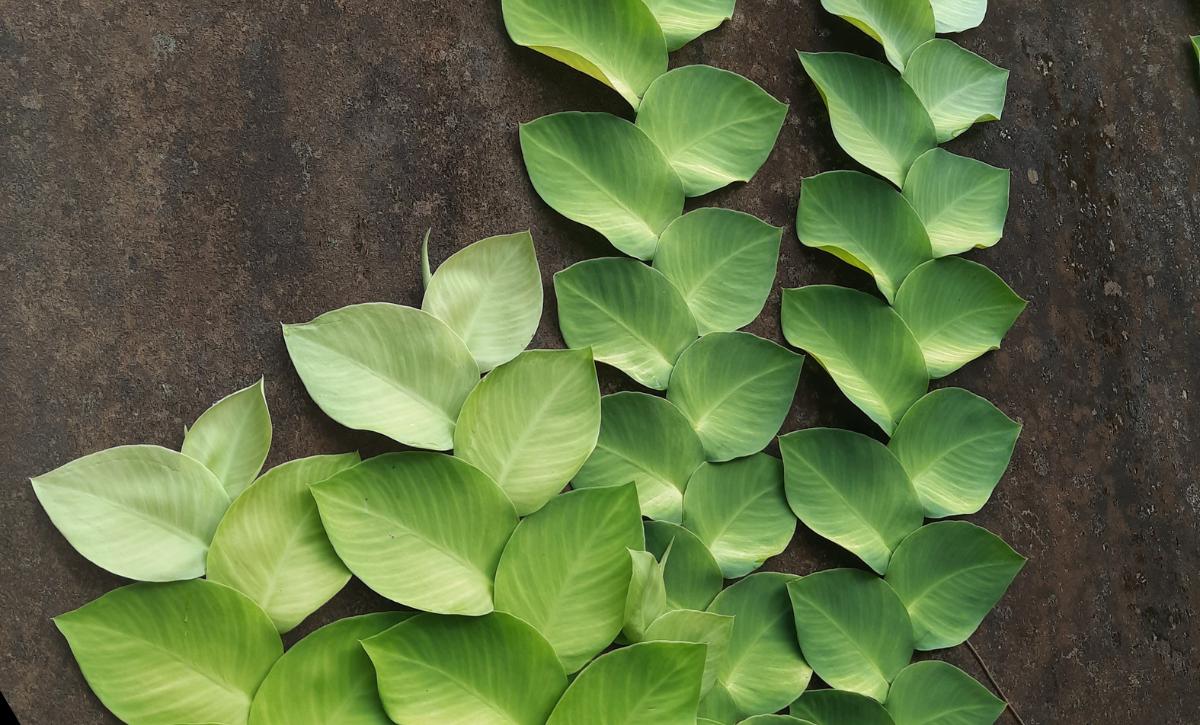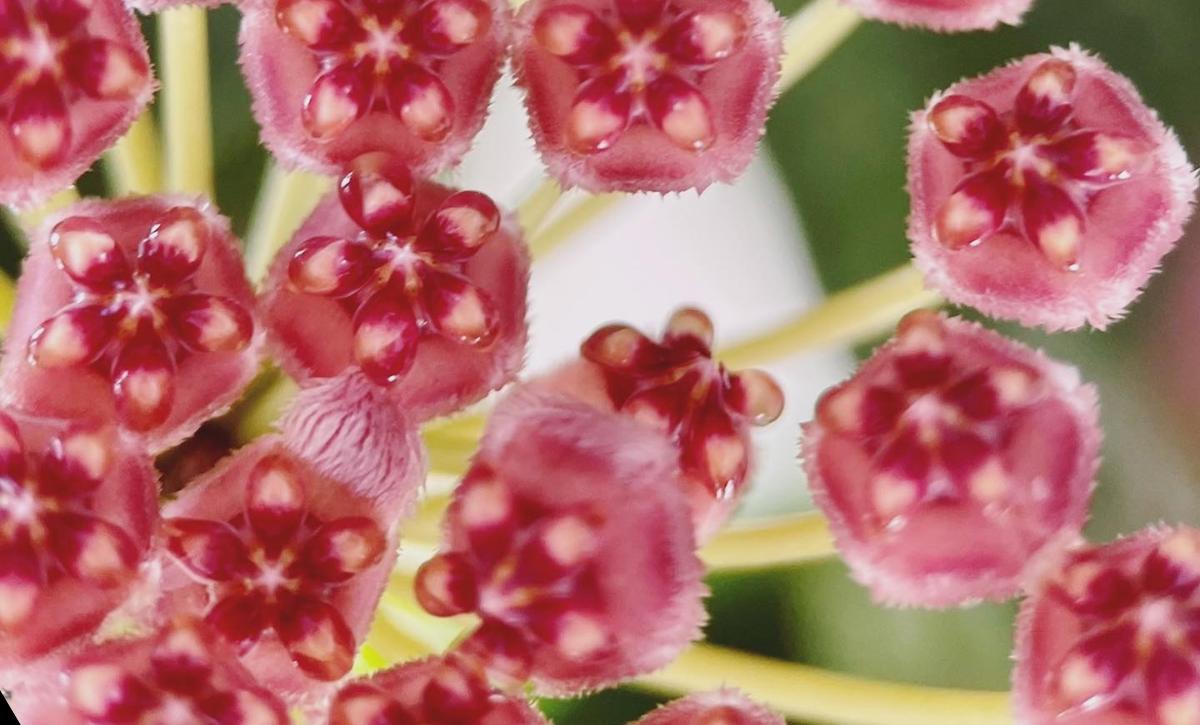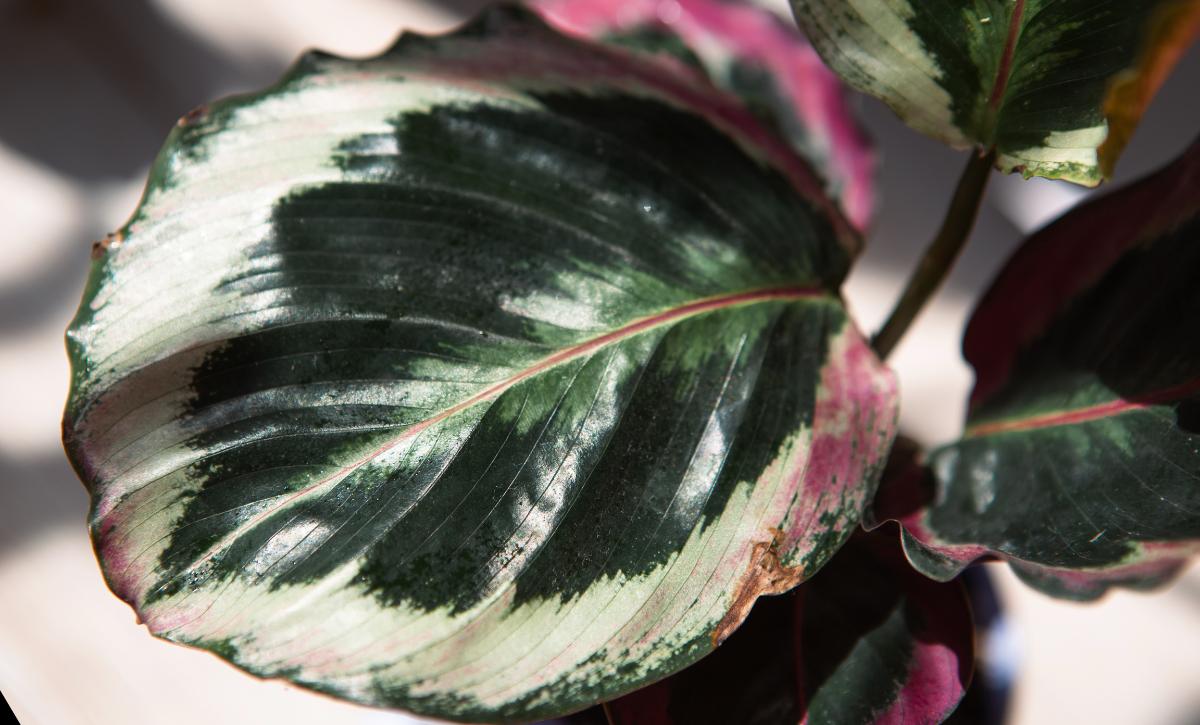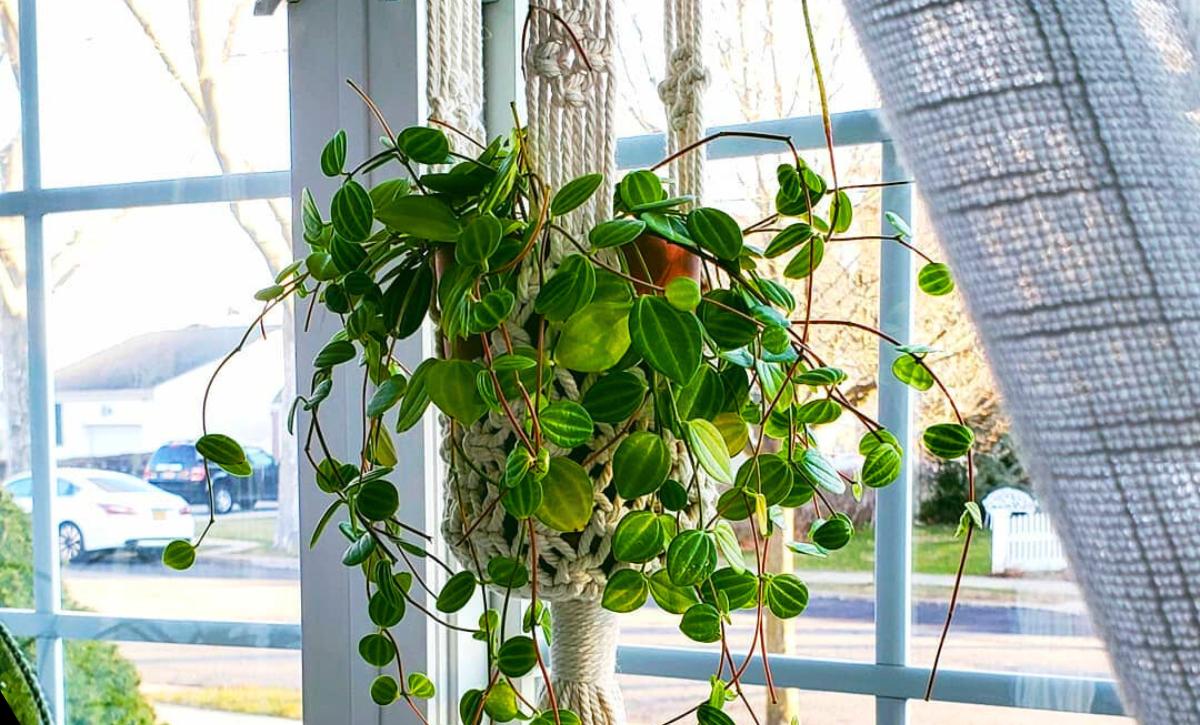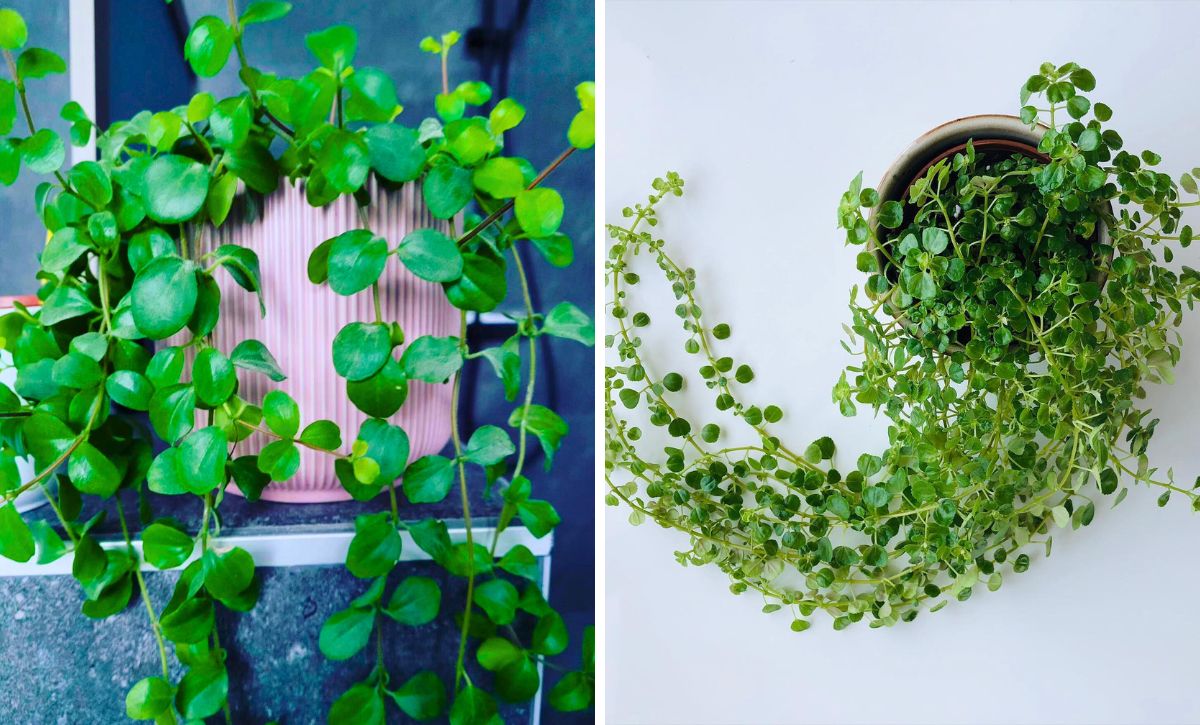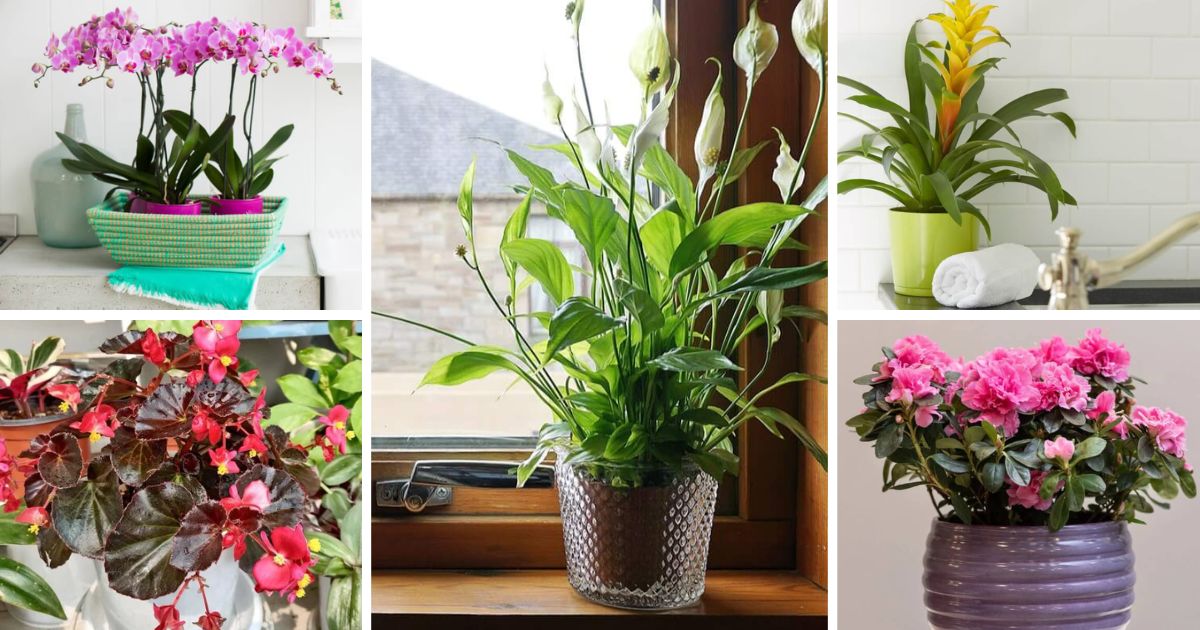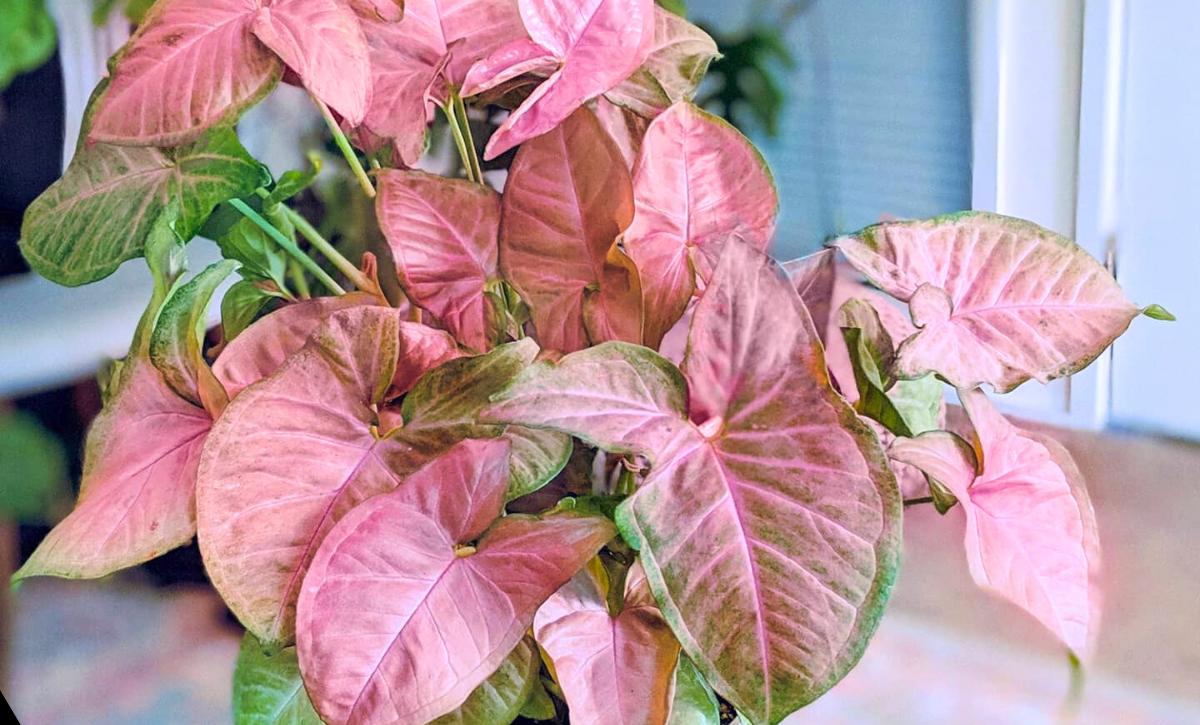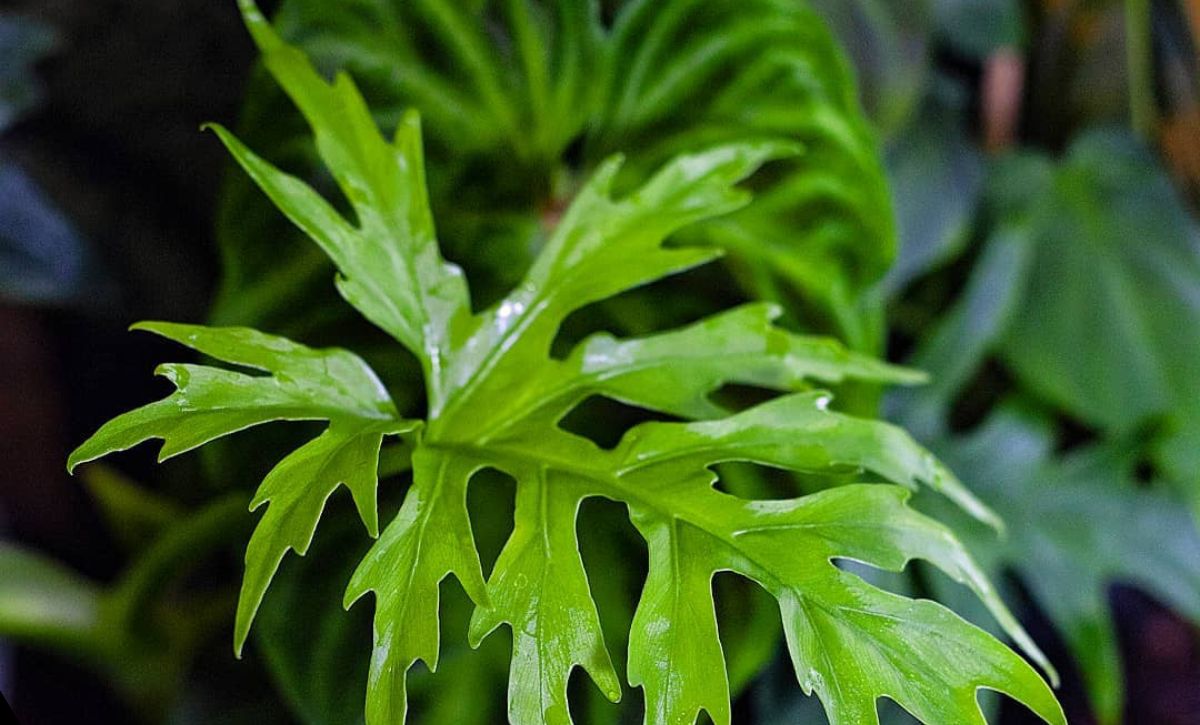I love Monsteras and can’t stop adding them to my home decor. I bet you agree with me that their striking foliage is a sight to behold.
The first time I repotted a Monstera, I was scared to death when I noticed drooping branches. I honestly thought I had killed my little, beautiful Monstera plant. However, that wasn’t the case. Apparently, you have to stake it up.
I know it sounds simple, but selecting the right time to stake your Monstera is very vital. That’s why I’ve decided to share my experience in staking Monsteras over the years.
This article’ll discuss everything involving staking a Monstera, including staking techniques, different types of stakes, and plenty of other things.
Let’s get the ball rolling, shall we?
Best Methods To Stake A Monstera
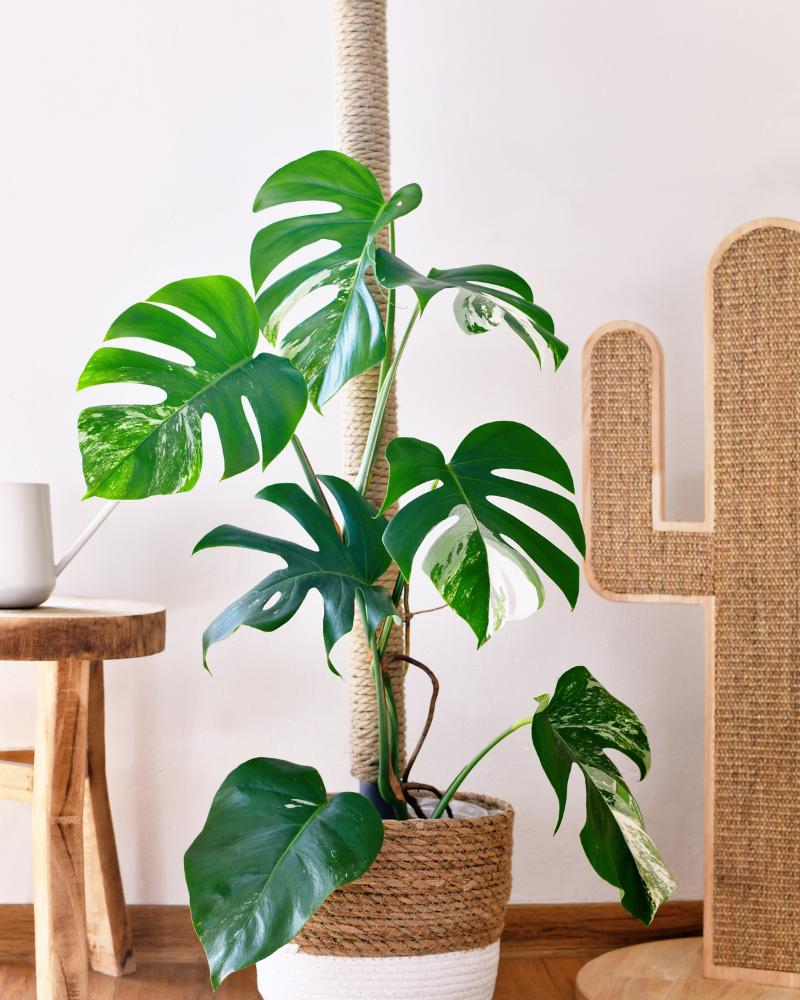
There are several staking methods, and I’m sure you know most of them. The ones I chose to cover are some of the most common and relatively easy to perform.
Let’s take a look at them.
Single Straight Stake Method
The single straight stake method uses a single stake, making it suitable for single-stemmed plants like Monsteras. It’s one of the most common staking methods that people use.
All you need to do is place a stake into the soil and gently tie your Monstera to it.
Ensure you don’t tie the plant too tightly since it can cause damage and stunted growth to your Monstera.
I recommend using stretchy ties such as nylon. They’re much easier to handle and won’t cause harm to your plant.
Wire Method
The wire cage method will be excellent for a rebellious plant that grows everywhere. Hence, you want to give them direction and shape them.
You only require your hands and a piece of wire, and you’re good to go!
Make a loop using the wire and place the ends at the top. Take your Monstera and gently tie it to the wire.
Wire Cage Method
The wire cage method is ideal for multi-stemmed Monsteras that are also heavy on top.
You can find wire cages at your local store, but in case you don’t find one, you can make your own DIY wire cage.
Take your plant and surround it with a wire cage.
You won’t need to tie it since the wire cage will act as the support.
Don’t forget to leave space between the wire cage and the plant to enable your Monstera to spread out.
Trellis or Moss Pole
The moss pole is a complicated method if you choose to go with it.
Nonetheless, it’s one of the best in supporting the growth of climbers. You can make a moss pole or buy it at a local shopping mart.
Don’t place your moss pole at the center. Instead, place it in the front part of the soil. This enables your Monstera to face outwards and create a picturesque view.
The next process is tying your Monstera to the moss pole. You’ll need to do this carefully to avoid any harm to the stem. I advise using yarn, nylon, or cotton string for this purpose.
Now, all you have to do is wait for your Monstera to attach itself to the pole and start growing upwards.
The Best Time To Stake A Monstera
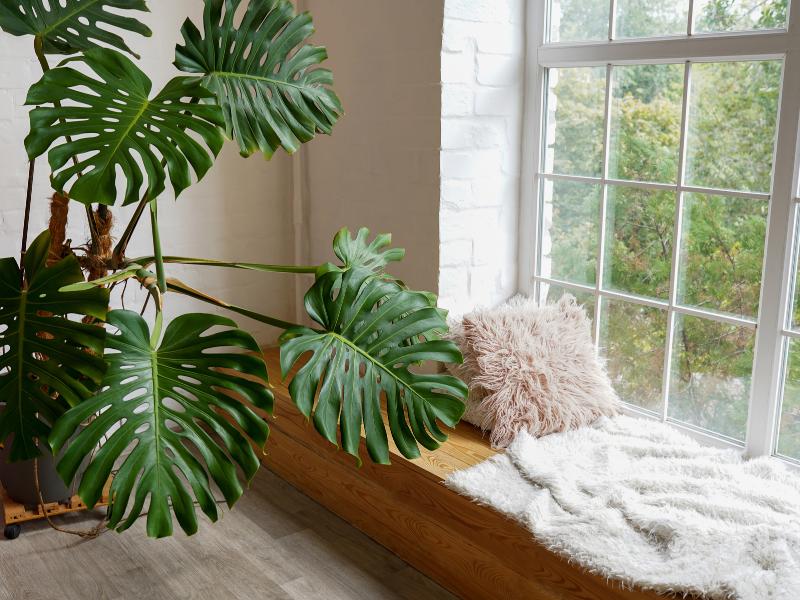
The one question you’ve probably been asking yourself is, how do I know when to stake the plant?
Well, there are plenty of signs that will indicate that a plant needs staking.
Let’s dive into more details.
Your Plant Shows Aerial Roots
Monstera plants start climbing once they find ample support. At this stage, you’ll begin noticing your plant developing aerial roots.
You don’t really have to tolerate the aerial roots. If they seem unpleasant-looking, you can prune or hide them. This would be best for a plant located in a cramped space.
Aerial roots will be able to spread the way you want when you provide efficient support.
Also, if you stake your Monstera with a trellis or moss pole, it grows in the right direction.
Your Monstera Starts Growing Horizontally
Monsteras are capable of growing either horizontally or vertically.
For larger spaces such as a greenhouse, horizontal growth isn’t so bad at all. After all, you’ll have a carpet of beautiful Monstera foliage. That sounds cool, right?
However, in small spaces, you must consider supporting your plant once it starts spreading out in a couple of months.
Staking is crucial to support vertical growth and prevent the plant from occupying your space.
Keep in mind to prune or remove the branches before you stake for this purpose.
Your Monstera’s Major Stem Starts Drooping
Monsteras usually boast large leaves that grow horizontally. These leaves will eventually drop if you fail to stake the plant.
Just a reminder, Monstera leaves droop axially over time because of their size, which is normal.
Staking will not only prevent the leaves from drooping, but it will also help manage the plant’s weight.
Without a stake, your Monstera’s main stem will begin to droop, and the plant will look like its falling over.
This might not be dangerous to older Monsteras, but for younger ones, they can break completely.
Your Monstera Needs Repotting
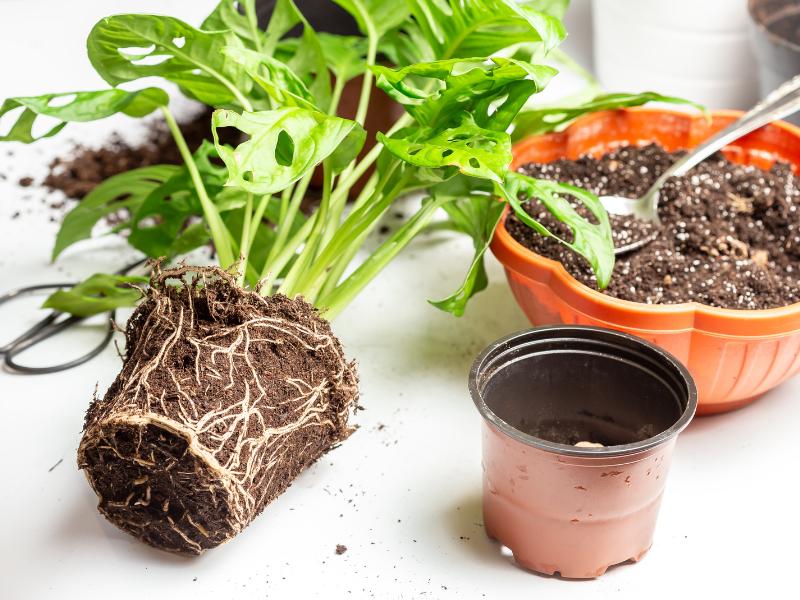
After every few years, you need to repot your Monstera. Actually, every plant needs repotting since pot size is a determining factor in a plant’s growth.
If there aren’t any signs of damage, you can leave the plant in the pot. However, you’ll still need to refresh your plant in the long run.
It would be best to stake your Monstera after transferring it to a new pot. This helps prevent diseases and the risk of death while managing its growth.
How to Repot a Monstera
Be careful with the pot size you choose to transfer your plant in. If you pick a pot that’s too big, your plant’s roots will have excess soil, which translates to excess moisture in the soil. This eventually could lead to root rot.
For example, the Monstera Adansonii is known for being fast-growing. This means its repotting requirements will be more than other houseplants. You’ll repot it more times!
Ensure you water your Monstera plant the day before repotting. Use your hands to pull the plant out and gently shake off the roots.
Ensure you leave half of the soil on the roots before placing them in the new pot. Remove any air spaces by pressing the soil down.
Here are more tips for repotting:
- Choose the right pot size to avoid excess moisture build-up around the roots and mushy soil.
- Ensure your pot has enough drainage holes to drain excess water from the soil and prevent root rot.
- Watering should be done less frequently after repotting since there’s already soil around your plant’s root system.
- Don’t clog the air space in your soil’s potting mix with water. This prevents the roots from accessing oxygen, leading to the destruction of the whole system.
- Always replace contaminated old soil to avoid any more problems. Careful observation of your plant is paramount to handle any changes that might occur.
Finding The Perfect Stake
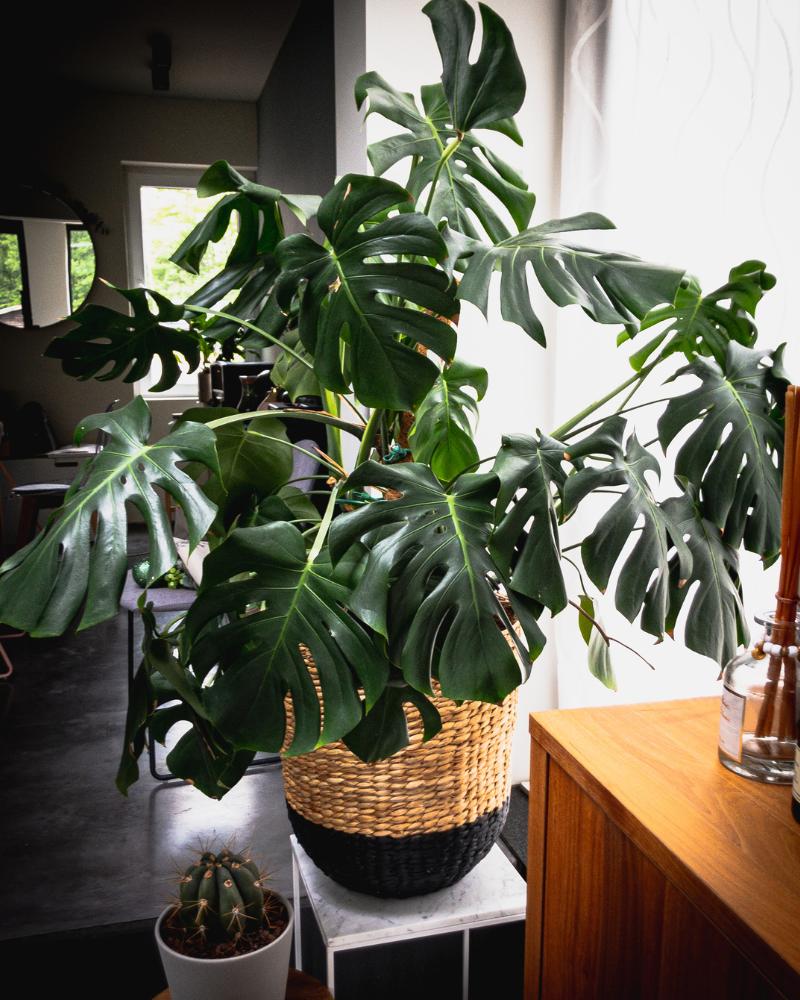
You can easily prevent your Monstera plant from drooping by staking it with a tied-up rope. However, I recommend investing in prepper poles to make the process easier.
We will discuss six different stakes you can use for your Monstera.
Let’s dive into the details!
Bamboo Stakes
Your bamboo stake should weigh about 0.064 ounces and be 35 x 0.25 x 0.25 inches.
You can get a few benefits from using bamboo stakes:
- They’re affordable and available in every store.
- They’re reusable. You can use this stake for gardening purposes, such as field or garden staking.
- They are strong.
- They are lightweight,
Bamboo stakes don’t necessarily need to be shaped or fit to resemble a trellis using any specialized tools. As such, these stakes can be used for indoor and outdoor plants. I guess that’s some good news!
Moss Pole
This is arguably the best and most popular stake you can use for your Monstera. Your moss pole should weigh about 13.4 ounces and be 17.17 x 4.33 x 2.13 inches.
Moss poles have a fuzzy texture that imitates Monstera growth in the wild, creating a striking mossy appearance.
Choose a high and wide pole for a healthier, more enormous Monstera houseplant.
Slender Rebars
These are particularly good for growing your Monstera outdoors or in a green room.
Your slender rebar should weigh about 7.41 ounces and be 17.63 x 4.73 x 2.36 inches.
Incorporate some mesh and plaster to cement the structure. This provides protection to your Monstera plant from any weather.
Coconut Coir Pole
A coco coir pole is an excellent choice if you aren’t intending to move your plant outdoors.
The pole should weigh about 6.35 ounces with a size of 23.62 x 1.77 x 1.77 inches.
They are perfect for use in medium-sized rooms. Coconut coir poles make for great plant support and act as excellent climbing poles.
The pole will also help your Monstera plant to absorb moisture from the surrounding environment once it latches onto it.
Tree Slabs
I know this suggestion may seem far-fetched, but tree slabs are also a choice you can consider when staking your Monstera.
The plant will receive plenty of strength from the outer parts of tree slabs.
Additionally, you’ll create a similar look to that of Monsteras growing in the wild.
DIY PVC Pipe
This is for those who like to explore their creativity and skills.
All you need is a sharpie, scissors, fishing line, a totem or sphagnum moss, and a PVC pipe.
Staking A Monstera Deliciosa
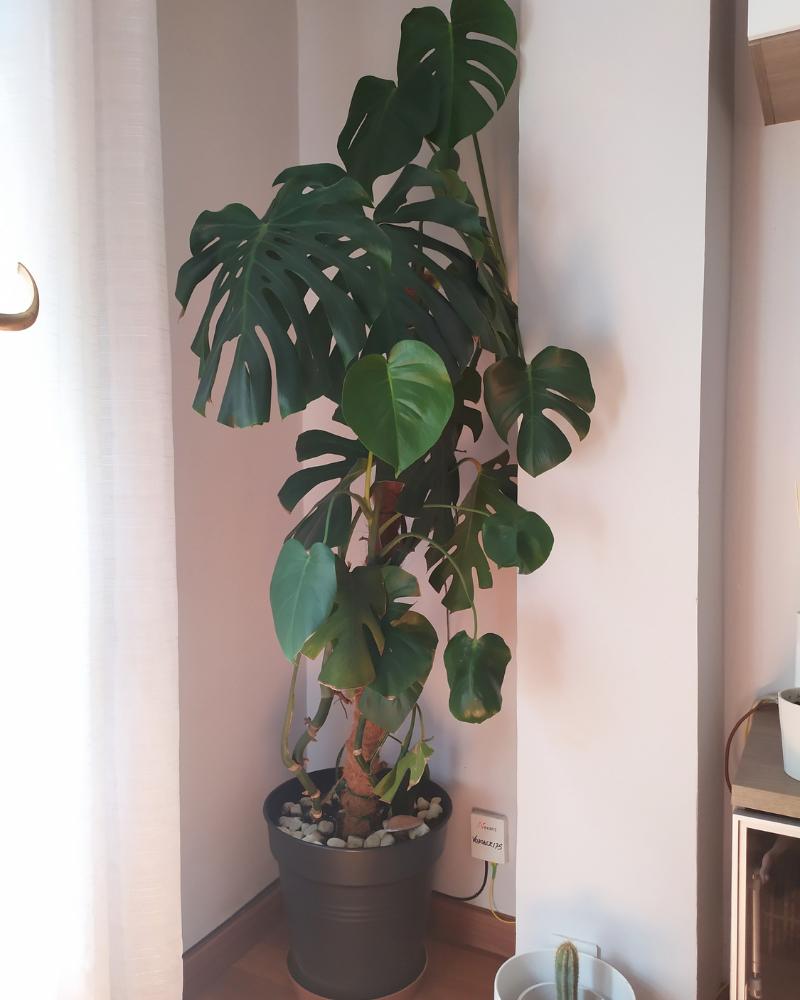
Staking a Monstera is a relatively simple process that doesn’t take long if done properly.
Before you begin, you’ll need to gather the following materials:
- Potted Monstera plant
- Bamboo sticks
- Velcro garden ties or soft plant ties
- Cotton string
- Coir
Let’s take a look at the process!
Prepare the Soil
This is a very crucial step if you want to avoid damaging the roots of your Monstera Deliciosa.
Ensure the soil around your Monstera is loose. This helps you identify the heaviest stem that needs support.
Get rid of any excess soil from the roots that are connected to the main stem.
Placing the Stake
After identifying the area for the stake and preparing the soil, take a garden spade or an identical long garden tool.
Begin by digging a tiny hole and then proceed to dig deeper until there’s enough room for the stake to be put in and be solid.
You can move around the stake until you find the ideal position for it to act as a support for the stem.
Increase the stability of the stake by adding the moss you removed earlier. Also, ensure the stake reaches the pot’s bottom.
Use Support Materials
This isn’t really necessary, especially if you’ve done the above steps correctly. However, it wouldn’t hurt to learn about them.
There are different materials you can utilize, including plant tapes, hemp ropes, and twines. These act as the backbone on top of the stake.
The stakes and stems should be loosely connected. Connecting them firmly has a high risk of damaging your Monstera.
Place the stake in a new pot and cover it with soil so that it stands straight.
Training Your Monstera Plant Around Support
After staking your Monstera, you have to train it around support.
Let me show you how!
Train Your Monstera When Young
The best time to train your Monstera plants is when they’re young. Young plants are more manageable since they haven’t reached their potential yet.
Insert your stake, then shift the stems around it, including the main stem. This enables the plant to grow in the desired direction.
Train Old Monsteras
Old Monsteras can also be trained to climb with support. However, this is much more complicated compared to young ones.
Older Monsteras have stiff stems; rather than flexible ones; hence more patience and time are required.
Tie the stems to the stake using a stretchy tie. Ensure you tighten the tie after every few days.
Once you notice the plant is growing as per your needs, loosen the tie. Vining plants are also another excellent option for supporting your Monstera plant.
Moisturize the Stake
A moist stake will save you a lot of time and stress; take it from me!
Your plant grows higher since the aerial roots can absorb water from the moist stake.
Spray the stake every few days using a sprayer. The roots will be able to grow in the right direction and also stay hydrated.
Extending the Stake
Monstera plants grow faster once you provide a stake, so be sure to remember that.
You can extend your stake in two ways:
Utilize an extendable pole when starting to stake.
Tie two poles together.
Look, I always say, ‘prevention is better than cure.’ So be prepared to extend your stake to avoid your plant falling over. That would be a nightmare!
Rotating Your Monstera
Keeping your Monstera in a fixed position will make the plant begin leaning toward a light source.
Consequently, leaves start growing in that same direction making your plant unbalanced. This leads to stunted growth.
Rotate the plant to ensure each part gets the same amount of indirect light.
You can use your watering schedule as a reminder to rotate your Monstera.
Trim Occasionally
You have to trim the branches and leaves of your Monstera regularly unless you want your whole space to be occupied by the plant!
Monsteras usually grow new leaves every two weeks, so there’s no need to worry about removing some of them.
If it helps, look at it as an opportunity to propagate and enhance new growth.
Is Staking A Monstera Necessary?
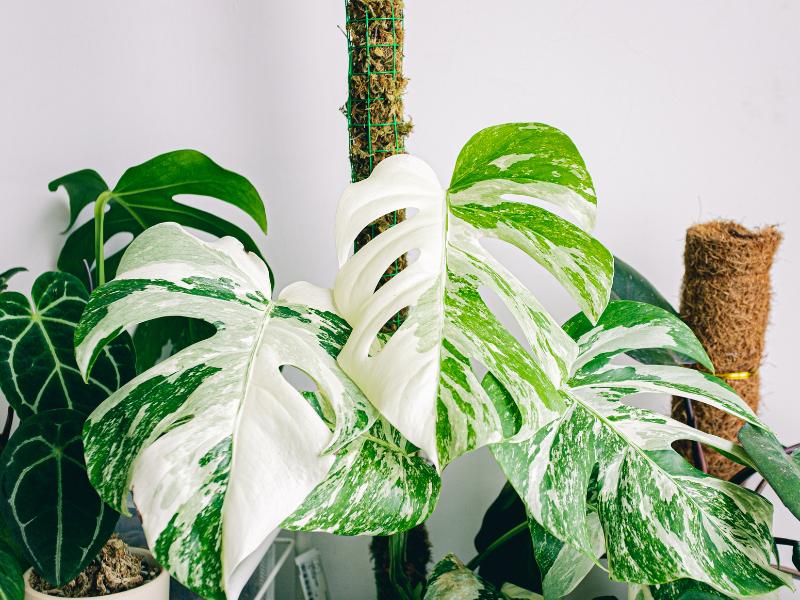
How about I share an interesting fact. Monsteras are actually epiphytes. This means they act as support to other plants.
Similar to natural climbing pothos, Monsteras appreciate the support from a stake.
The following are the benefits of staking Monstera plants.
- Staking enables your Monstera to grow in the desired direction and manage its space.
- Staking eliminates the risk of your plant falling down. A Monstera without a stake will search for a light source and grow in that direction.
- Staking helps the Monstera leaves grow larger and faster and develop fenestrations more quickly.
Caring For Your Monstera Plant After Staking
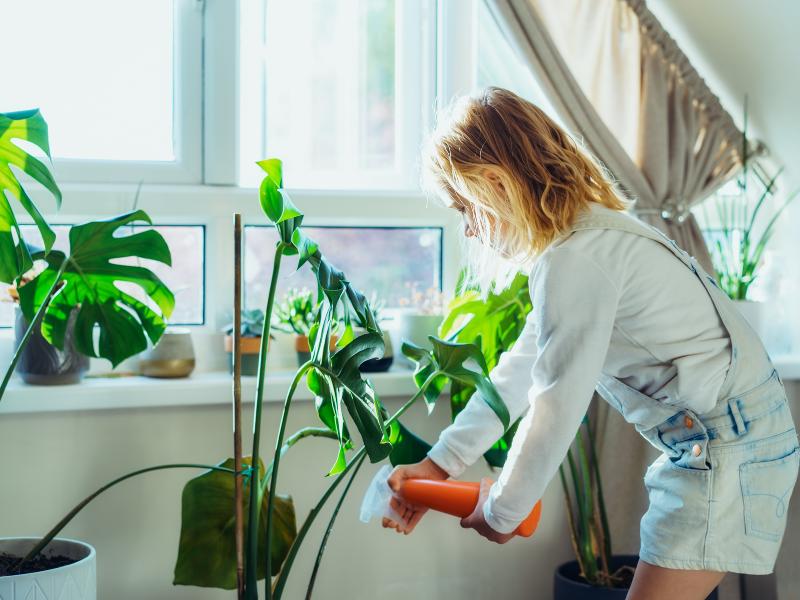
This section involves some tips to ensure optimal growth for your Monstera plant.
Perfect place: Monsteras thrive in indirect light. Avoid exposing the plant to direct sunlight since the leaves will be scorched.
Soil type: Add peat moss and perlite to boost your plant’s growth. Use a well-draining medium that has drainage holes. The pH level of the soil should be 5.5-6.5.
Rotation: Rotate the plant regularly to ensure each side receives enough sunlight. Use your watering time as a reminder.
Misting: Mist the plant’s foliage in between waterings.
Regular inspection: Your Monstera may undergo several issues. Through careful observation of the plant’s leaves and roots, you can tell if something is wrong.
Repotting: ensure to repot the plant every two years.

Final Thoughts
Staking a Monstera sure does involve a lot of things. Now that you know how to train and stake a Monstera plant, go ahead and try it.
There’s no joy like watching your beautiful Monstera plant thrive. Staking will eventually reward you with a healthy, big-leafed plant.
Have fun!

